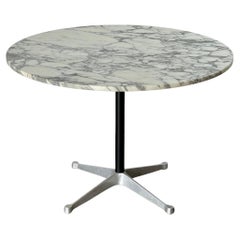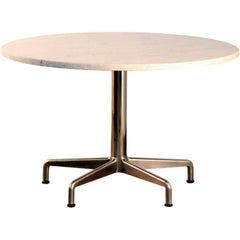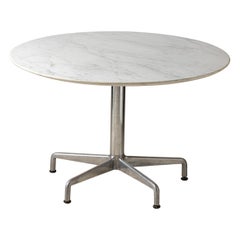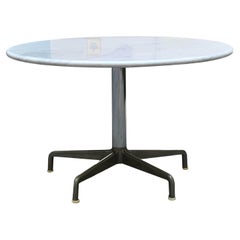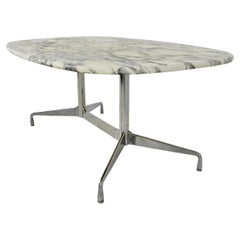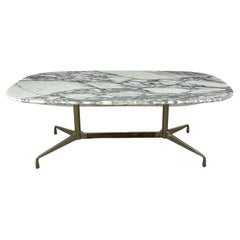Eames Marble Dining Table
Mid-20th Century Italian Mid-Century Modern Dining Room Tables
Marble, Metal
Vintage 1970s American Dining Room Tables
Marble, Aluminum
Vintage 1960s French Dining Room Tables
Carrara Marble, Aluminum, Steel
Vintage 1960s Unknown Mid-Century Modern Dining Room Tables
Carrara Marble, Aluminum
Recent Sales
Vintage 1970s Central American Mid-Century Modern Dining Room Tables
Carrara Marble, Metal
Vintage 1970s French Mid-Century Modern Dining Room Tables
Marble, Metal, Aluminum
Vintage 1970s Central American Mid-Century Modern Dining Room Tables
Marble, Metal, Aluminum
1990s Italian Dining Room Tables
Marble, Aluminum
Vintage 1970s Italian Mid-Century Modern Dining Room Tables
Marble, Metal, Aluminum
Vintage 1970s Central American Mid-Century Modern Dining Room Tables
Marble, Metal, Aluminum
Vintage 1970s American Mid-Century Modern Dining Room Tables
Marble, Metal, Aluminum
21st Century and Contemporary Swiss Minimalist Dining Room Tables
Marble, Metal
20th Century French Dining Room Tables
Marble, Chrome
Vintage 1970s American Mid-Century Modern Conference Tables
Marble
Vintage 1960s American Gueridon
Marble, Aluminum
2010s American Mid-Century Modern Dining Room Tables
Carrara Marble
Mid-20th Century German Mid-Century Modern Dining Room Tables
Marble, Aluminum, Chrome
Vintage 1970s American Dining Room Tables
Marble, Aluminum
Vintage 1960s American Mid-Century Modern Dining Room Tables
Marble, Steel, Aluminum
Vintage 1960s American Space Age Dining Room Tables
Marble, Metal
Mid-20th Century American Mid-Century Modern Dining Room Tables
Carrara Marble
Mid-20th Century American Mid-Century Modern Dining Room Tables
Carrara Marble
Mid-20th Century American Mid-Century Modern Dining Room Tables
Carrara Marble
Mid-20th Century American Mid-Century Modern Dining Room Tables
Marble, Aluminum, Steel
Mid-20th Century North American Mid-Century Modern Conference Tables
Marble
Vintage 1970s American Mid-Century Modern Dining Room Tables
Marble, Aluminum
Vintage 1960s American Dining Room Tables
Mid-20th Century Swiss Mid-Century Modern Dining Room Tables
Marble, Aluminum
Vintage 1970s Mid-Century Modern Conference Tables
Mid-20th Century American Mid-Century Modern Dining Room Tables
Marble, Aluminum
Mid-20th Century Mid-Century Modern Dining Room Tables
Marble, Metal
People Also Browsed
2010s Italian Mid-Century Modern Chandeliers and Pendants
Steel
2010s American Mid-Century Modern Wall Lights and Sconces
Brass, Bronze, Enamel, Nickel
2010s Polish Mid-Century Modern Chairs
Bouclé, Velvet, Beech, Linen
Vintage 1970s Italian Mid-Century Modern Figurative Sculptures
Ceramic
Vintage 1960s Dutch Mid-Century Modern Side Tables
Marble, Metal
2010s Italian Mid-Century Modern Console Tables
Brass
Vintage 1950s Czech Art Deco Armchairs
Beech
Mid-20th Century Italian Mid-Century Modern Coffee and Cocktail Tables
Carrara Marble, Aluminum
Mid-20th Century Swedish Scandinavian Modern Cabinets
Beech, Oak, Teak, Walnut
Vintage 1970s Dutch Club Chairs
Leather
Mid-20th Century North American Mid-Century Modern Credenzas
Macassar
Early 20th Century French Side Tables
Metal
Vintage 1970s Swedish Scandinavian Modern Table Lamps
Faux Leather, Teak
2010s Italian Decorative Boxes
Metal
Vintage 1950s Italian Mid-Century Modern Daybeds
Metal
Mid-20th Century Unknown Mid-Century Modern Desks and Writing Tables
Steel, Chrome
Read More
The Ultimate Guide to Types of Tables for the Home
Whether you’re just moving in or ready to give your home a makeover, our guide will give you pointers on tables that are fitting for every room, nook and hallway.
May’s Most Popular Interiors on Instagram
Our feed is filled with the world's most beautiful spaces. See the rooms our followers have deemed the best of the best this month.
New Orleans’ Lee Ledbetter Makes Design Magic by Mixing Past and Present
The Louisiana-born and -bred architect talks to 1stdibs about the art of making timeless places that matter.
Desert Modern Designer Arthur Elrod Finally Gets His Day in the Sun
The Palm Springs interior decorator developed a mid-century style that defined the vacation homes of celebrities and other notables, including Bob Hope and Lucille Ball.
From the Hamptons to Palm Springs, FormArch’s Homes Embody Both Comfort and Cool
The houses from this New York studio cloak modernist tendencies within what are often more traditional trappings.
